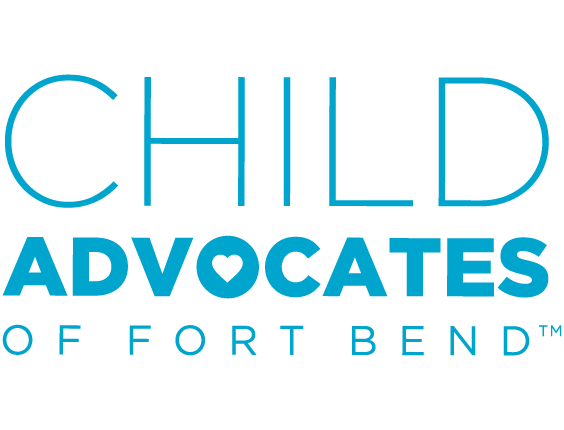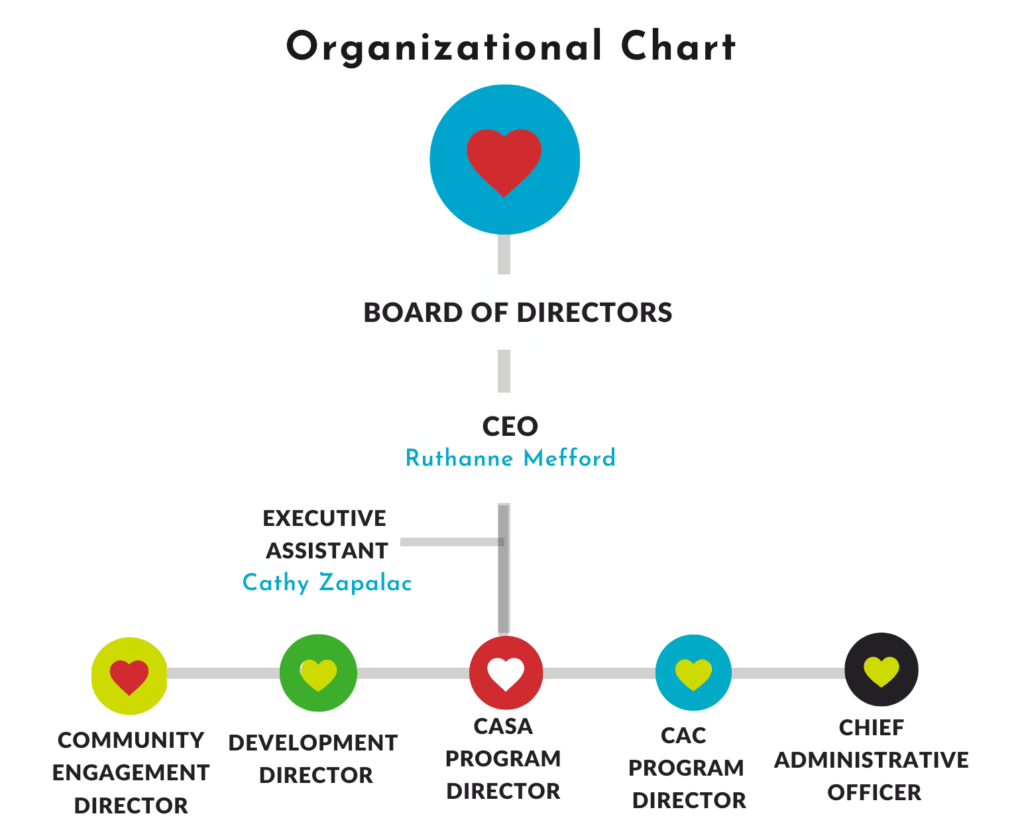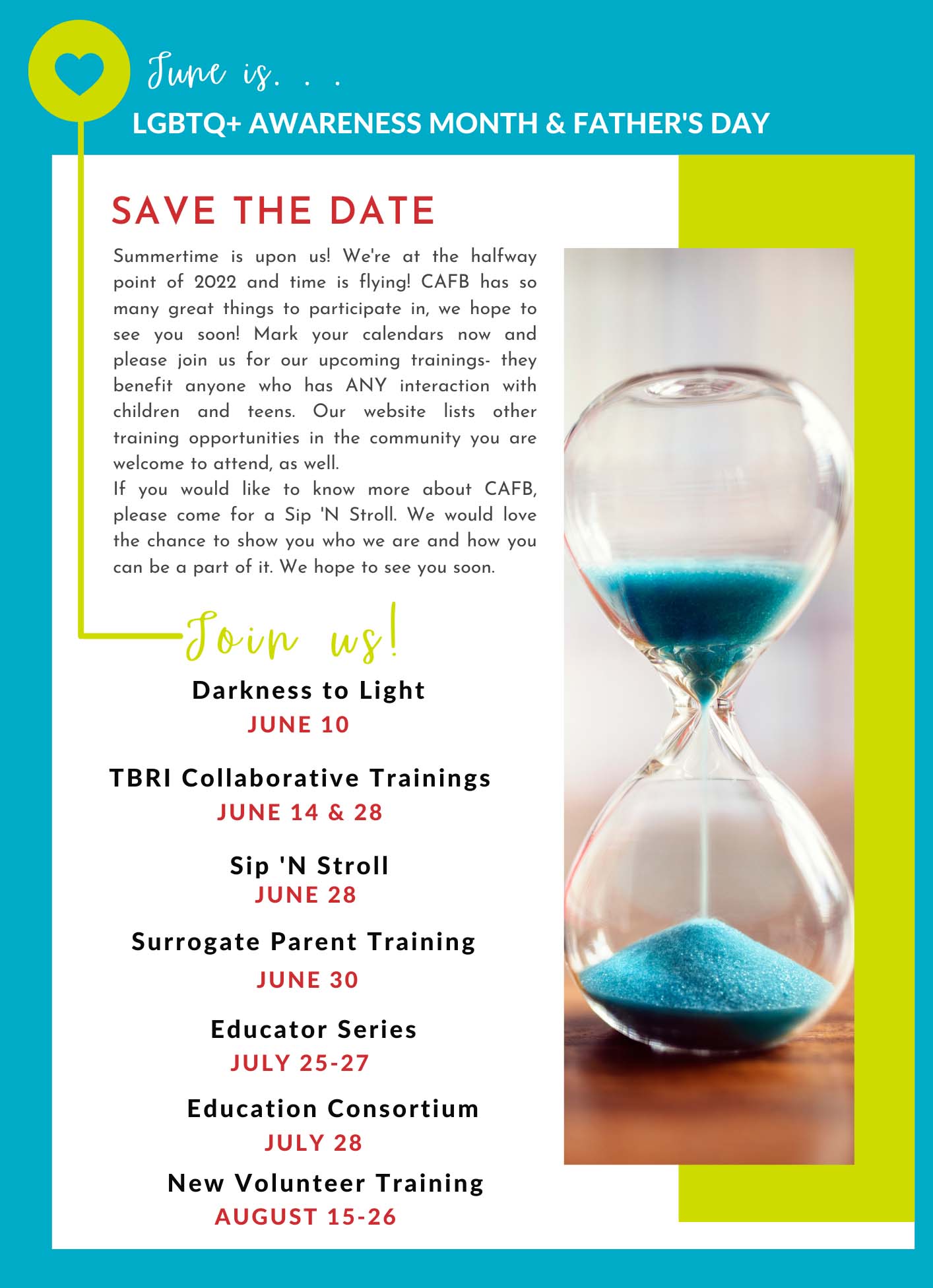Happy Summer!
It’s hard to believe that the school year is over. Nine months ago, the world looked very different for children here in Fort Bend County. Children were still largely attending remote schooling. Many students were experiencing the fallout of extended isolation, lack of social interaction and the absence of support systems. Many children were exhibiting trauma and mental health symptoms. In response, we doubled-down on outreach, treatment and healing. In the past 9 months since the start of school, our Community Engagement team has reached out to 6,638 students across the county with safety messaging about abuse. We have advocated for 152 children in our CASA Program. Our Education Council has provided educational resources and advice for scores of children. Our Training Team has offered 36 trainings to volunteers, staff, board members and the community who work with children. We have given 1,099 children the opportunity to share their stories of abuse with a forensic interviewer in our Children’s Advocacy Center, and helped 56 children on their journey to healing through trauma-focused therapy. Today, schools have reopened, children are recovering and we have vastly expanded our trauma-focused training and approaches so that we can be more responsive to what children have experienced over the school year.
We have also been busy with important initiatives related to our culture here at CAFB. Over the past 18 months, we have completed an assessment of our policies and practices related to diversity, equity and inclusion. We then took these findings and created a multi-pronged approach to implementation. One prong would focus on our Internal Culture as it relates to staff and our work environment. Organized as a Values Framework, we have launched a Champion Team with representation across the agency whose members will each lead a group of staff members to identify some aspect of our culture on which to focus. They will conduct “Learning Journeys” in which they will research these areas across the CASA and CAC networks, among our peer institutions and in different organizations. They will develop recommendations and present these to our leadership team for consideration. We are working with an outside coach to help develop leadership skills and provide guidance to the Champion Team, our Managers and our C-Level Directors.
A second prong will focus on factors relating to equity and inclusion with our clients and volunteers. This effort will be more externally focused and take into consideration factors related to ensuring cultural sensitivity with the children and families we serve – which is a highly diverse population reflective of the diversity of Fort Bend County, each with unique needs and identities.
A third component will address diversity in our Board of Directors and build a recruitment pipeline and leadership development opportunities so that we are well positioned moving forward to have diversity in board representation across our community and ensure that our governing practices reflect our values.
We are excited to bring you updates on these initiatives in the coming months and look forward to what the future holds to more fully embrace our Values which spell CHILD: Collaborative, Healing, Inclusive, Life-Changing and Dedicated. I welcome your input on this important work.
In closing, June is the month we celebrate all the wonderful men who are part of our volunteers and partners. Happy Father’s Day and thank you for giving of yourself to be that positive adult in the life of a child and help children have strong male role models. We love our MEN of CAFB!
For the Children’s Sake,

Ruthanne Mefford, CEO
AGENCY HIGHLIGHTS
Keeping you informed on our mission:
Strengthen the child’s voice, Heal the hurt, and Break the cycle of abuse and neglect for children in Fort Bend and surrounding counties.
We’re almost halfway through 2022 and expanding more than ever so we can meet the needs of our children and families. Here, we will give you an overview of our organization to show you who we are. In the following months, we will introduce you in greater detail to each position on the team.
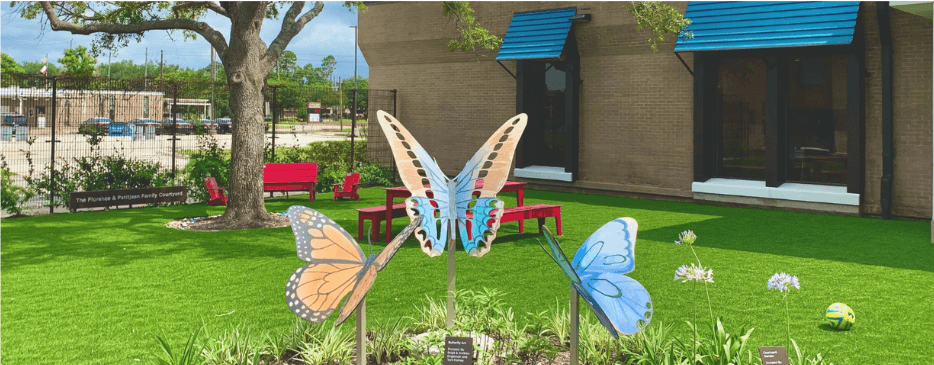
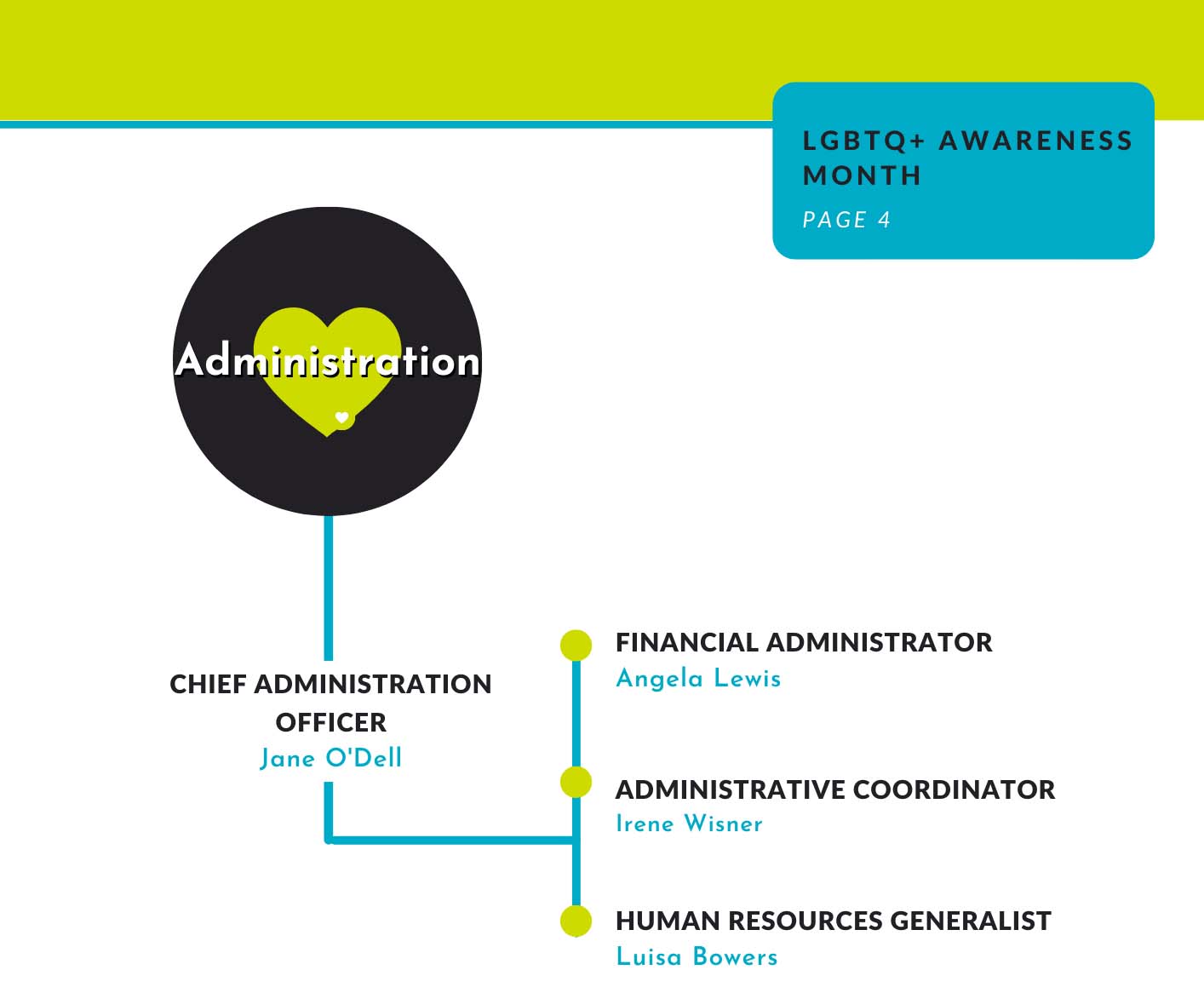
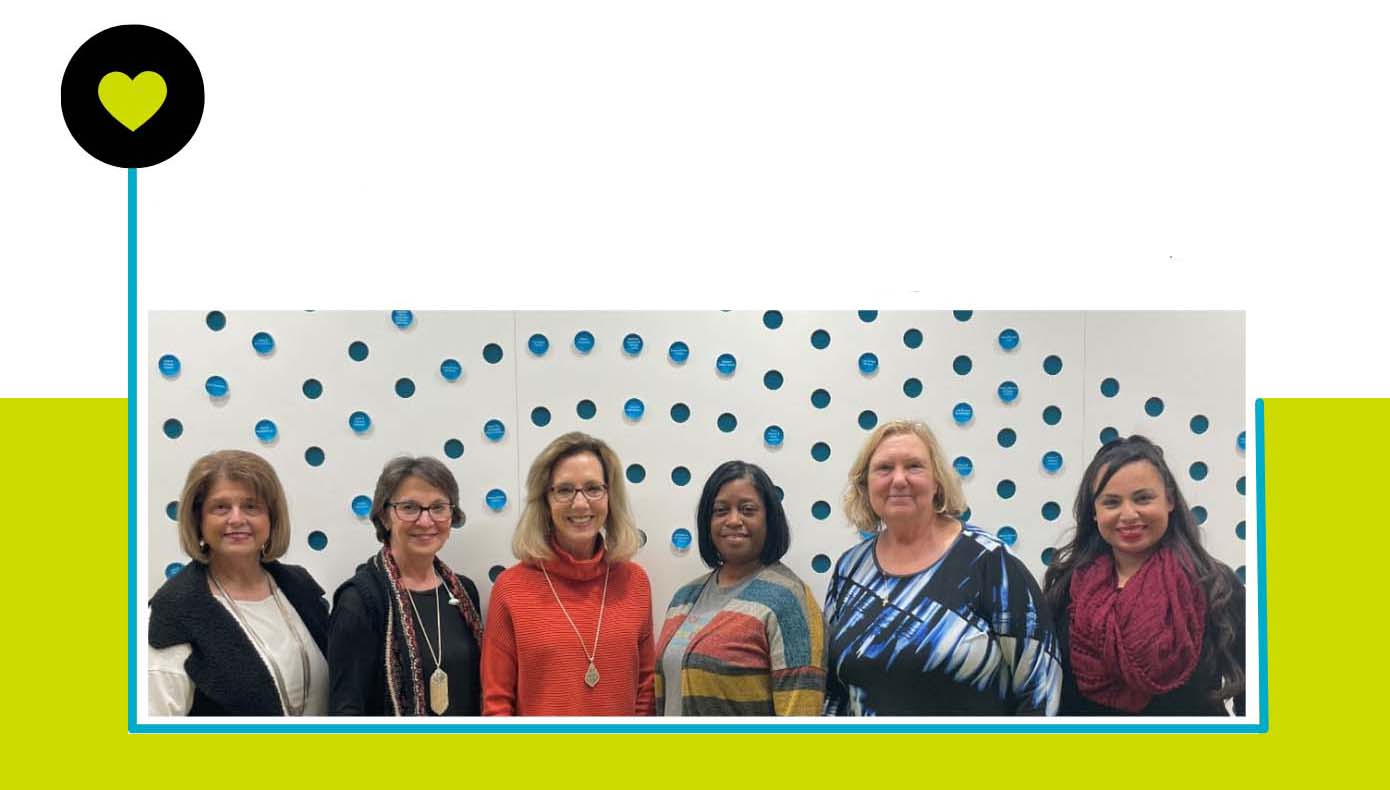
Meet the team!
L to R are: Irene Wisner; Cathy Zapalac (Administrative Assistant to the CEO); Ruthanne Mefford (CEO); Angela Lewis; Jane O’Dell; and Luisa Bowers
 IMPROVING OUTCOMES FOR OUR LGBTQ YOUTH
IMPROVING OUTCOMES FOR OUR LGBTQ YOUTH
Written by Dana Mersiovsky
What makes a person’s identity?
Personality traits, abilities, likes and dislikes, your belief system or moral code, and the things that motivate you — these all contribute to self-image or your unique identity as a person. People who can easily describe these aspects of their identity typically have a fairly strong sense of who they are.
Definition of identity
– The distinguishing character or personality of an individual; individuality.
– The relation established by psychological identification.
Youth identifying as LGBTQ are overrepresented in child welfare, and they experience higher instances of homelessness, poor educational outcomes and youth probation. Leaders and service providers in child welfare, health, mental health, education, housing and other systems have real opportunities to improve outcomes for youth.
According to the National Survey of Child and Adolescent Well-Being, It is estimated that approximately 23% of children in out-of-home care, including foster care, identified as LGBQ and over half of these children are youth of color. Not included in the study are youth who identify as Transgender and therefore the true number is underestimated.
The well-being of youth depends on the support of nurturing family or individuals to help them negotiate adolescence and grow into healthy adults. LGBTQ youth in foster care face additional challenges that their peers who are not in the child welfare system do not, including the losses that brought them into care in the first place, trauma they may have suffered while in foster care and stressors unique to the LGBTQ community. An important step in ensuring youth are active participants in programs and services is making sure they feel welcome. Feeling discriminated against in any professional setting – with health care providers, office staff, teachers, or case workers – can create a sense of reluctance and mistrust. A key component in the promotion of youth engagement is the creation of safe spaces. These safe spaces allow youth to openly discuss difficulties they have faced, which in turn fosters open dialogue and allows for the development of new strategies for coping and thriving. Supportive communities that provide safe spaces for the expression of challenges and support not only raises community consciousness about youth, but can also promote stronger identification for these youth with the LGBTQ community. By promoting solidarity and pride, these strategies help build healthy relationships and a sense of community for individuals who often are extremely isolated.
In crafting solutions that not only reduce disparate outcomes, but also promote the health and well-being of LGBTQ youth involved in child welfare, advocates and policymakers must first understand the multiple and often compounding factors that contribute to disparate outcomes. Targeted, cross system collaboration that ensures all youth have the resources necessary for healthy development, promotes the safety of youth who identify as LGBTQ and commits to achieving their permanency can improve outcomes for LGBTQ youth and families who come into contact with child welfare and other intervening systems. Addressing interconnected issues of inequities based on sexual identity, gender identity, race, ethnicity, class, ability, and immigration status is critical to better serving all children and families through child welfare services.
Out of the Shadows: Supporting LGBTQ Youth in Child Welfare through Cross-System Collaboration – 2016 Center for the Study for Social Policy via Texas CASA

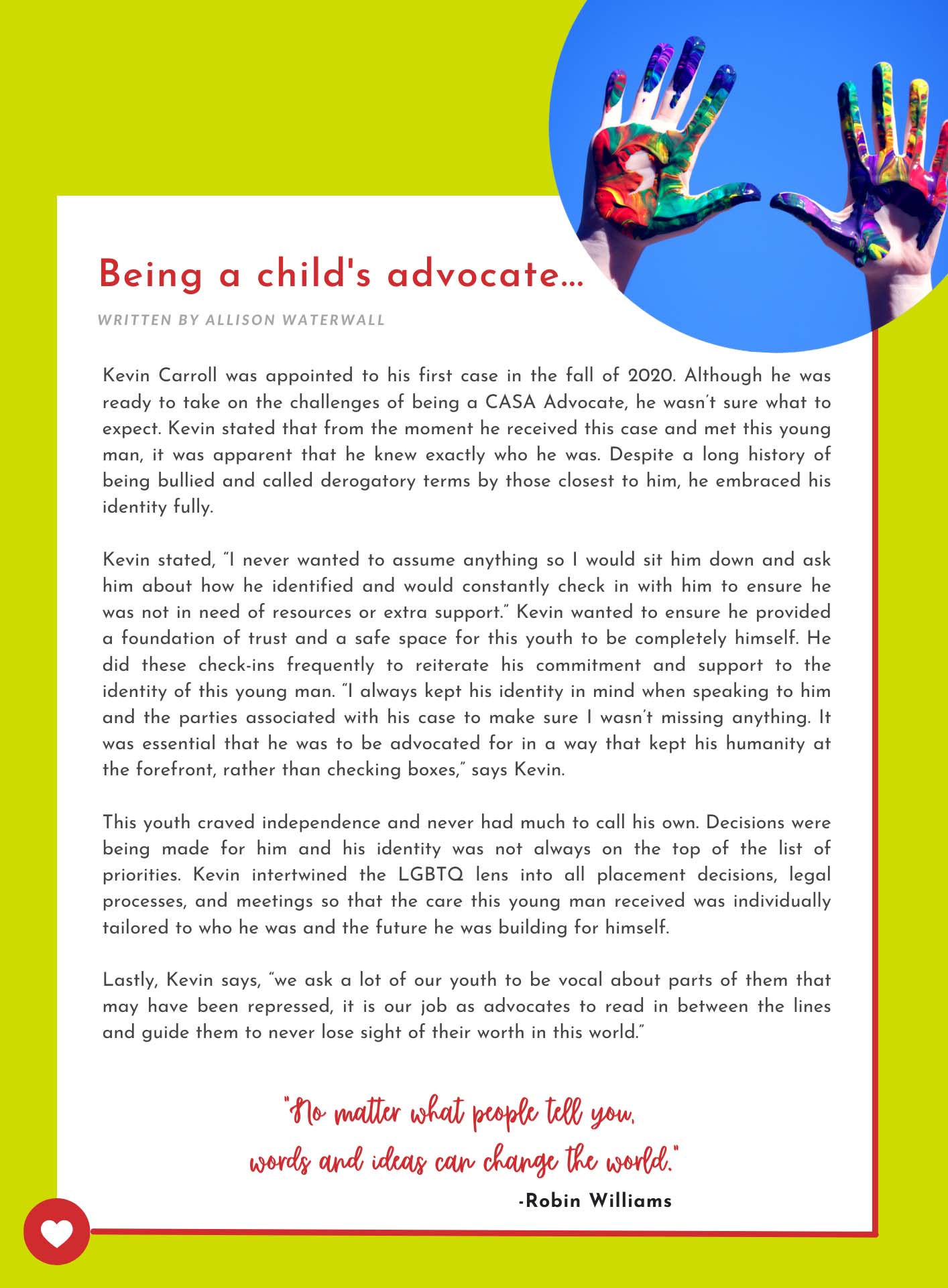

June has us all thinking about fathers or father figures and the important role you play in the life of your children. Most of us can think of a strong, positive male role model we had in our lives. Men can be strong advocates of child abuse prevention when they exhibit healthy relationship boundaries, show appropriate emotion, and are clear on respecting others.
Here are some resources for dads to help you better connect with your children:
Books
Scaffold Parenting: Raising Resilient, Self-Reliant and Secure Kids in the Age of Anxiety by Harold S. Koplewicz M.D.
The Whole Brain Child by Daniel Siegel M.D. and Tina Payne Bryson Ph.D
Online resources
https://citydadsgroup.com/podcast/
https://www.zerotothree.org/espanol/fatherhood
https://www.brighthorizons.com/family-resources/the-art-of-being-a-father
SUMMER SAFETY
Written by Lindsey Castellanos
School’s out for summer! I can just hear the song in my head and it makes me relax just a bit. Summer is the time to make memories and give kids fun opportunities they might not have during the year.
We will discuss some tips to make those experiences as safe as possible.
1. Ask camps and youth serving organizations (YSOs) about their child abuse policy or code of conduct. The director or owner should be able to clearly tell you what they expect of staff when it comes to interacting with children and any training that they require. You can ask if they require child abuse prevention training. Best practice would be that anyone serving children is trained in prevention strategies like those taught through Darkness to Light: Stewards of Children.
2. Talk about overnights. Where will your child sleep? Do doors stay open at a friends house? Are there older children in the home/at the camp? Where do they sleep? Who monitors sleeping arrangements/showers at camps? Coming up with a code word or phrase is an easy way for children to call and let you know they want to be picked up. Maybe they are not ready to be away overnight or something made them uncomfortable and they want to come home. A phrase between a parent and child can make that much easier or less embarrassing.
3. Familiarize yourself with times a child might be in a one-on-one situation. Sexual abuse most often happens in secret. If there are times that your child may be alone with one adult or an older youth, are there ways to prevent that?
4. Talk to children about the events or groups they are going with. Play the “What-if” game. Ask what if someone makes you uncomfortable? Could they say “No. Stop. I don’t like that.”? What if they see something on someone’s device They shouldn’t see? (You can explain this on a developmentally appropriate level: pictures of people without clothes on, pornography, violent games, challenges that are dangerous.) Let kids tell you what strategies they would use. Think about people they could tell at the event or after, like you, if something happens.
5. Last, know what devices your child is using and monitor them. If you can, teach internet safety before allowing them to use apps or videos games. Netsmartz.org has great resources. If your child has a device already, familiarize yourself with the apps they use. Turn profiles to private. Change settings to reduce the likelihood of exposure to pornography. And talk to your child about the dangers and tricks people use online to get money, photos, or their location.
6. Talk about safe adults. We tell kids all the time about stranger danger but kids are abused by someone they know 90% of the time. This could be an adult or another child who is older or more powerful. Safe adults are people who respect their boundaries, and they feel comfortable talking to when they have a problem. You can be the safe adult for your child, but know that it can be hard for children to tell you due to shame, guilt, fear, or a host of other reasons. A child not telling their parent isn’t a reflection on you. It’s really hard for children to tell about sexual abuse.
When we talk more openly about child safety it raises awareness for everyone. Children are less likely to be abused when they have empowerment strategies and parents model that it’s ok to talk about these topics. Sometimes parents are concerned that talking about sexual abuse will make their child curious or expose them to things beyond their development. Research shows that children are more protected when they understand the risks. All the resources we use are based on research and developmental appropriateness. Let us know if you have questions. Or join us for a training!
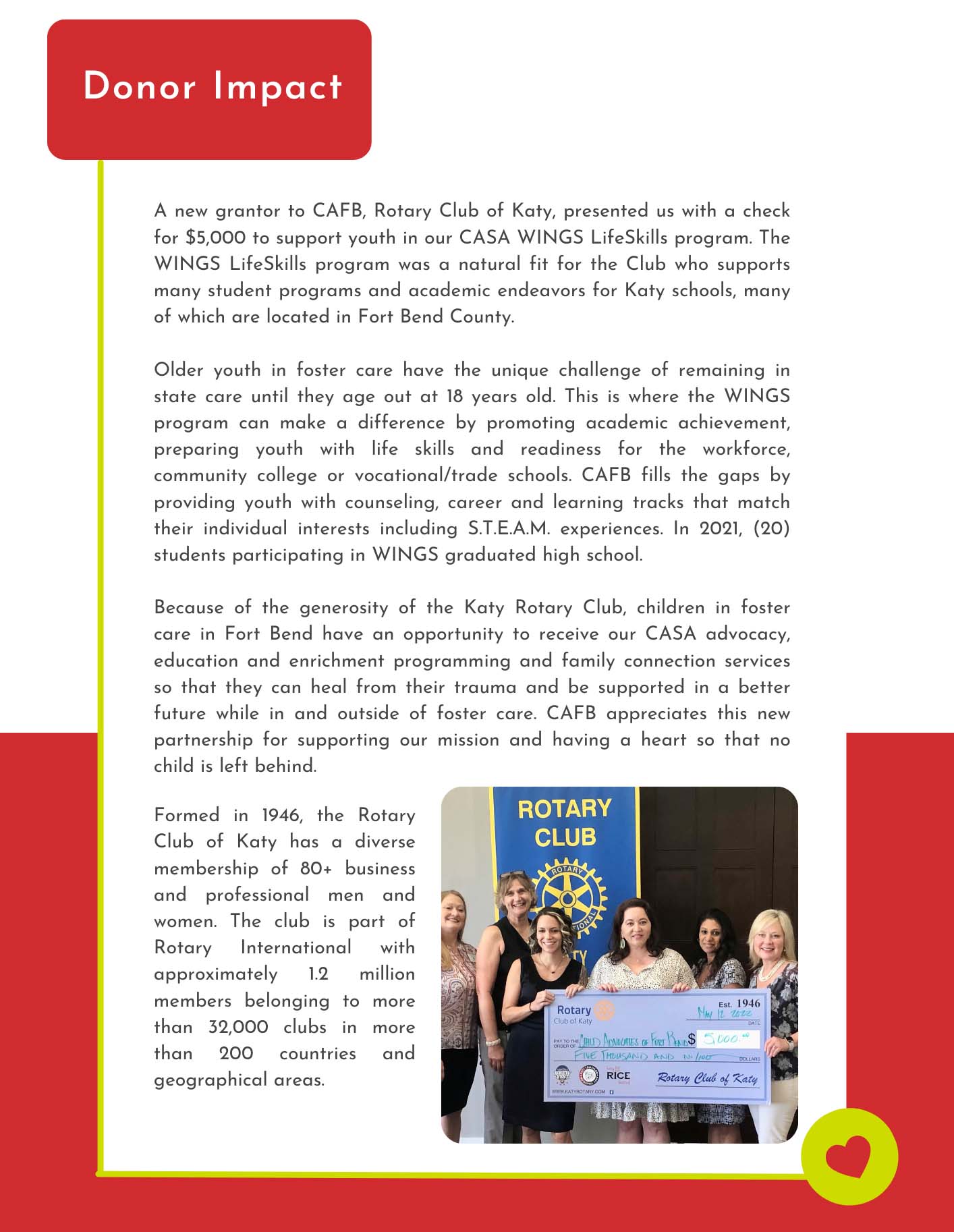
THROUGH THE LOOKING GLASS GALA
The Sugar Land Marriott was transformed Saturday, May 7th into an Alice in Wonderland theme. We had over 560 supporters, making our event a great success! Many thanks to the volunteers and staff who worked tirelessly to make this Gala the best yet! We were proud to partner with Lori Renfrow, Kris & team with Phoenix Design Group, Mandap Creations, Johnny Bravo and Michele Fisher. Special shout outs to Pat Somers, Vickie Looney, Frankie Steele, Alexis Jackson, Carrie Fix, Lin Wooten, Bev & Rick Martinez and so many more. We are in awe of the support from the community and so many that believe in the mission of Child Advocates of Fort Bend.
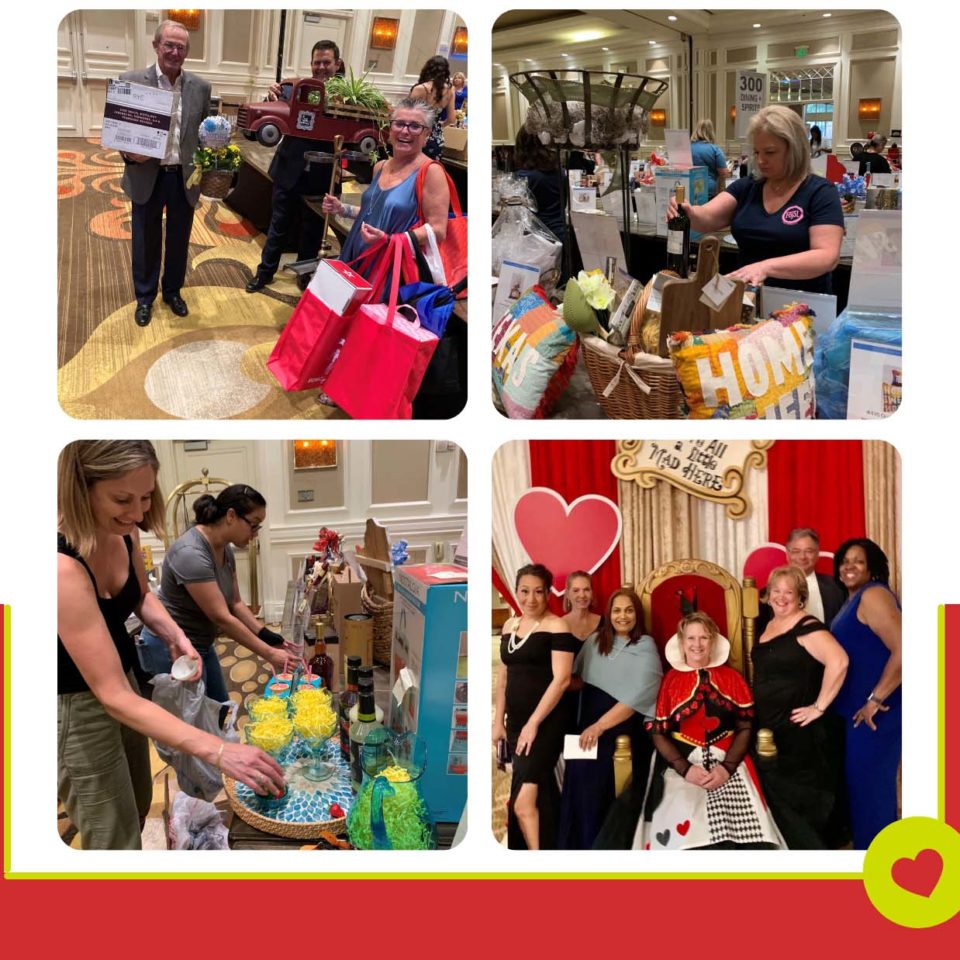
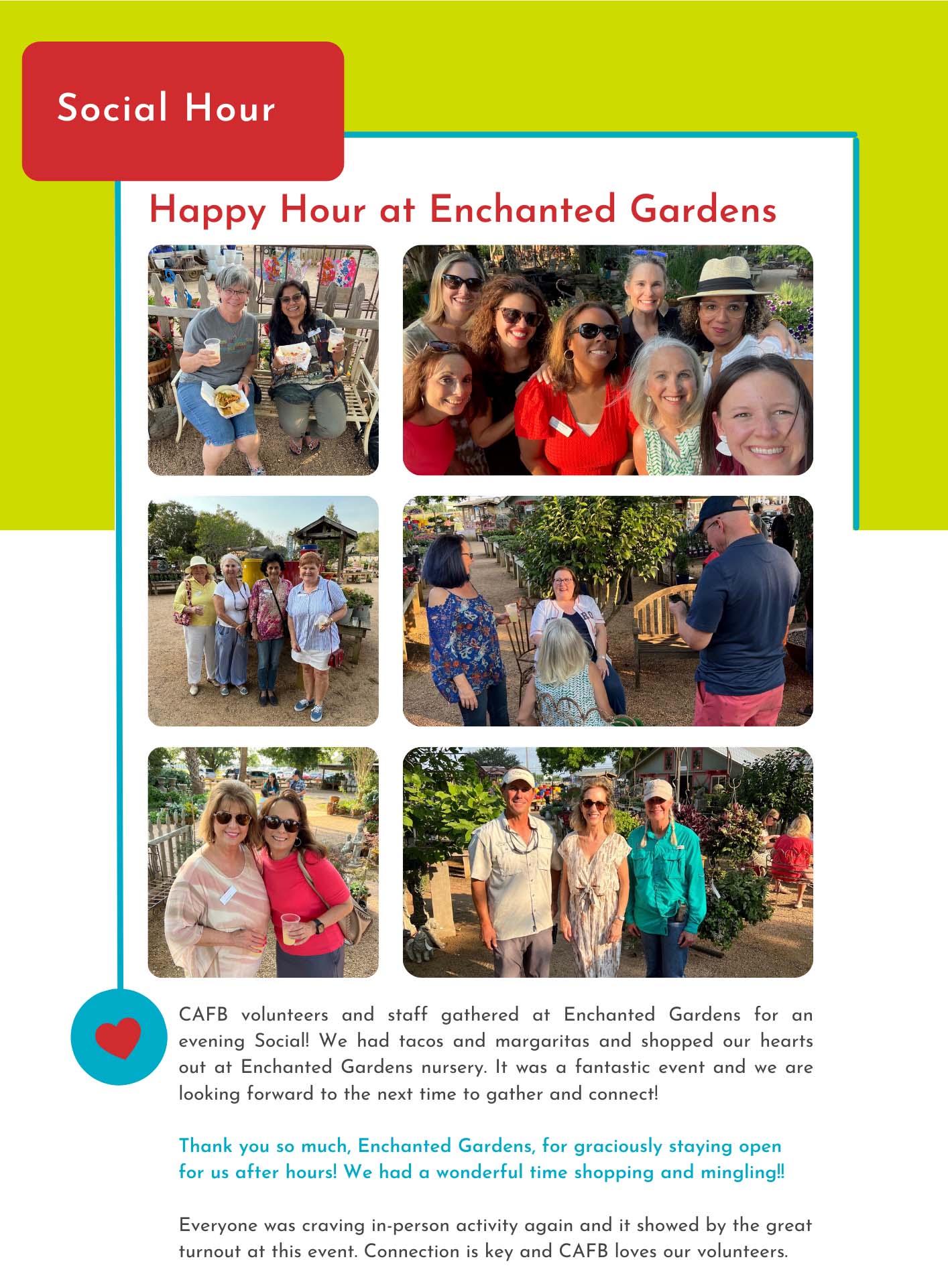
WHAT IS TBRI®: Trust Based Relational Intervention
Written by Alli Waterwall
TBRI® is an attachment-based, trauma-informed intervention that is designed to meet the complex needs of vulnerable children. TBRI® uses Connecting Principles for attachment needs, Empowering Principles to address physical needs, and Correcting Principles to disarm fear-based behaviors.
While the intervention is based on years of attachment, sensory processing, and neuroscience research, the heartbeat of TBRI® is connection.
The TBRI® Caregiver training is offered through the Fort Bend TBRI Collaborative, funded by the George Foundation. Child Advocates of Fort Bend is a founding member and proud partner. The training is 24 hours broken into 4 sessions.
For more information on registering for their trainings please contact Alli Waterwall at Awaterwall@cafb.org.
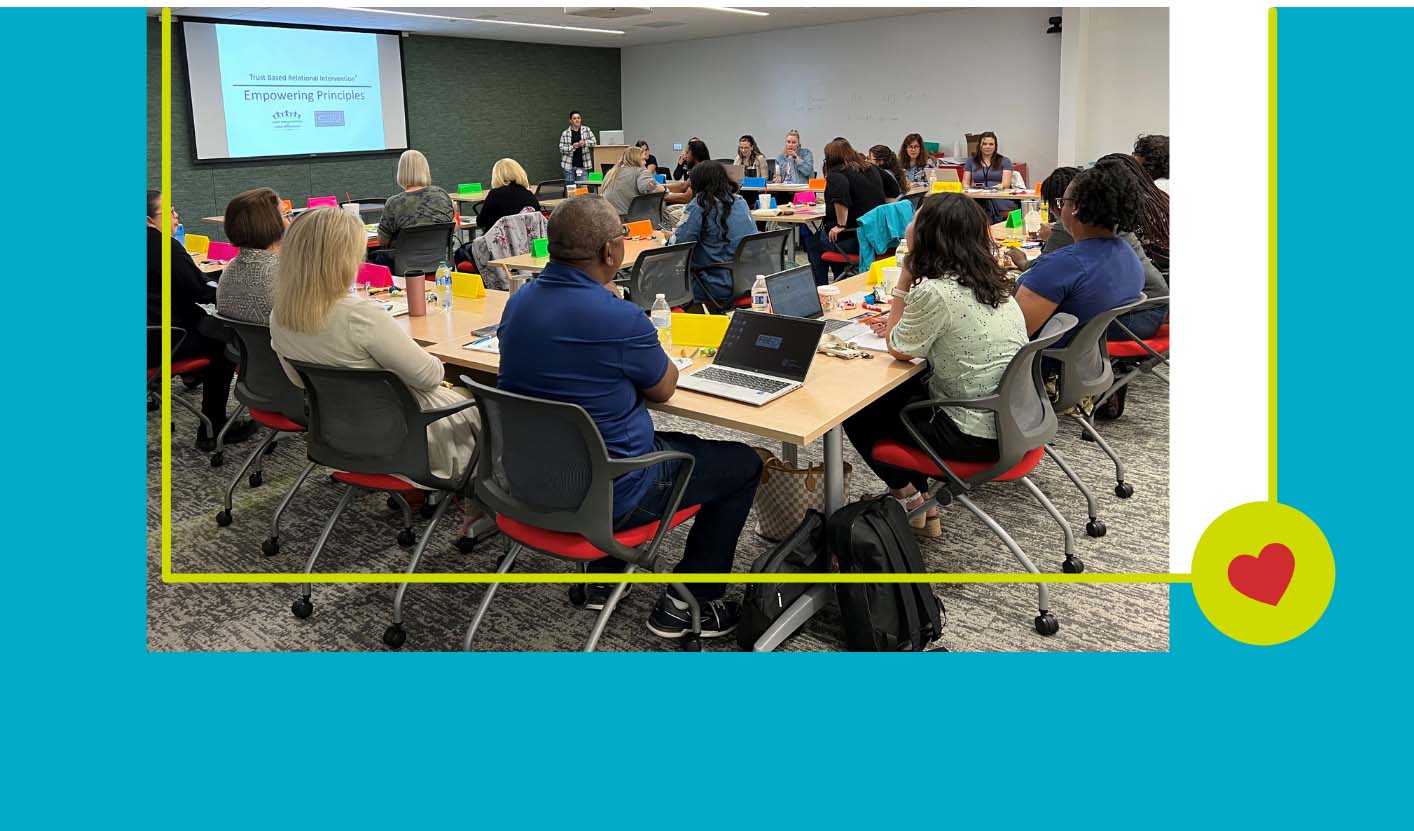
NEEDS & OPPORTUNITIES
Written by Jen Brown
Our CAC has seen more teenagers and is looking for fidget spinners specifically. We always have a need for items for teenagers, and our wish list has a few ideas for you to choose from!!
Our Therapy team needs 20-25 “therapy graduation kits”. The kits consists of: bubbles, eraser, sticky notes, rubber bands, pencils, stress balls, a notebook, playdough, crayons and a kaleidoscope in bag or box. Please reach out to Jbrown@cafb.org if you would like to help with this.
Our Training team is looking for fidget toys to help participants who attend our MANY trainings each month. This helps focus and stay regulated.
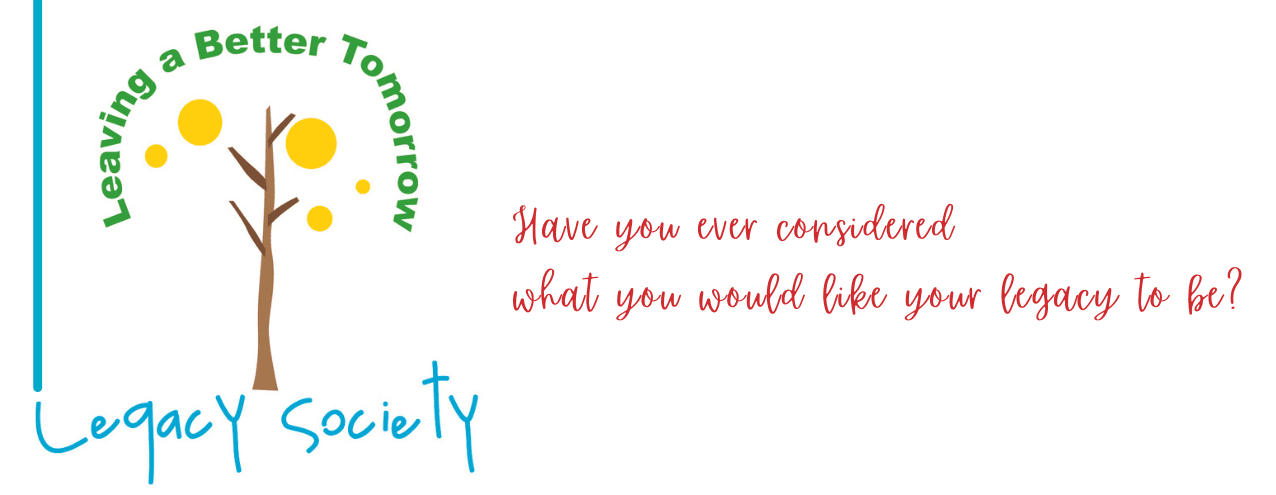
Planned Giving is simply another way to meet your philanthropic goals in a thoughtfully planned, high impact way. Planned Giving is a way for you to integrate your personal, financial and estate planning by making lifetime or testamentary gifts. There are a variety of ways to do this. When the time is right for you, we would love to visit to discuss the values closest to your heart and explore how your different gift options could benefit vulnerable children for years to come, while also benefitting you and your family.
Here are 5 simple ways to make a legacy gift:
Retirement Assets, Stocks and Bonds, Cash, Insurance Policies, Property
For more information on major or planned gifts please contact
Lisa Moore at lmoore@cafb.org or visit our website here https://www.cafb.org/donate/.
For more information on any of these events go to www.cafb.org.
